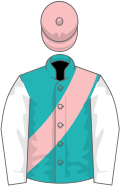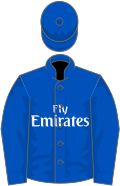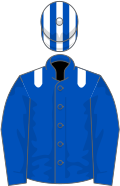| Class | Group 2 |
|---|---|
| Location | Rowley Mile Newmarket, England |
| Inaugurated | 1878 |
| Race type | Flat / Thoroughbred |
| Sponsor | Godolphin |
| Website | Newmarket |
| Race information | |
| Distance | 7f (1,408 metres) |
| Surface | Turf |
| Track | Straight |
| Qualification | Three-years-old and up |
| Weight | 9 st 3 lb (3yo); 9 st 5 lb (4yo+) Allowances 3 lb for fillies and mares Penalties 5 lb for G1 winners 3 lb for G2 winners since 31 March |
| Purse | £125,000 (2025) 1st: £68,052 |
| 2025 | ||
 |  |  |
| Beauvatier | Poet Master | Cosmic Year |
| Previous years | ||
|---|---|---|
| 2024 | ||
 |  |  |
| Topgear | Royal Scotsman | Quinault |
| 2023 | ||
 |  |  |
| Matilda Picotte | Lord Massusus | Audience |
| 2022 | ||
 |  |  |
| Pogo | Sacred | Misty Grey |
| 2021 | ||
 |  |  |
| Al Suhail | With Thanks | Chindit |
| 1990-1988 | ||
|---|---|---|
| 1990 | ||
 |  |  |
| Sally Rous | Anshan | Rami |
| 1989 | ||
 |  |  |
| Distant Relative | Dancing Tribute | Kerita |
| 1988 | ||
 |  |  |
| Salse | Reprimand | Timely |
The Challenge Stakes is a Group 2 flat horse race in Great Britain open to horses aged three years or older. It is run on the Rowley Mile at Newmarket over a distance of 7 furlongs (1,408 metres), and it is scheduled to take place each year in October.










































